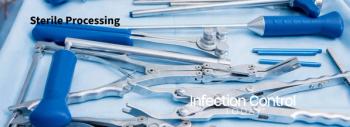
Cold Plasma Treatment May Reduce Risk of Norovirus Transmission
Treating surfaces with cold atmospheric pressure plasma (CAPP) may reduce the risk of transmitting norovirus, a contagious virus leading to stomach pain, nausea and diarrhea, according to a new study. The work, published this week in mBio®, the online open-access journal of the American Society for Microbiology, showed that CAPP significantly reduced the number of virus particles in norovirus samples. CAPP, which actually is close to room temperature, is a type of gas used to kill bacteria without harming surfaces or human tissues. It is being used in some medical applications like wound healing. Some scientists also are investigating its potential to remove bacteria from fruits, vegetables and meats.
The finding is exciting because noroviruses typically are very stable in the environment, resisting treatment by detergents or chlorine, freezing or heating, said senior study author Günter Klein, head of the Institute of Food Quality and Food Safety at the University of Veterinary Medicine Hanover in Germany. Noroviruses are the most frequent cause of epidemic nonbacterial acute gastroenteritis worldwide, he said, causing more than 19 million cases of illness in the United States each year.
"CAPP is an environmentally friendly, low energy method that decreases the microbial load on surfaces," Klein says. "The technology is effective against viruses with a high tenacity, like noroviruses. Its successful application in medical therapy should be transferred to other areas."
To investigate CAPP's impact on norovirus, Klein and colleagues prepared on sterile petri dishes three dilutions of a 2011 stool sample from a German soldier infected with norovirus. They treated the samples with CAPP for varying lengths of time, up to 15 minutes, in a plasma chamber.
After treatment, the scientists observed that samples treated for the longest time had the lowest viral load. CAPP reduced the number of potentially infectious virus particles from 22,000 (similar to what would be found on a surface touched by someone infected with norovirus) to 1,400 after 10 minutes, and to 500 after 15 minutes. Some reductions in viral load were seen in as little as one to two minutes of treatment.
"Cold plasma was able to inactivate the virus on the tested surfaces, suggesting that this method could be used for continuous disinfection of contaminated surfaces," Klein says. Although plasma could not eliminate the virus completely, he says, "a reduction is still important to lower the infectious dose and exposure for humans."
In future studies, Klein's team will test plasma's disinfection properties on additional surfaces and types of norovirus, and use electron microscopes to examine the structure of the virus before and after CAPP treatment.
Study coauthors were from the Max Planck Institute for Extraterrestrial Physics in Garching, Germany, and the Central Institute of the Bundeswehr Medical Service Kiel in Kronshagen, Germany. Three coauthors participated in the research while employed by the Max Planck Society; all are now founding members of a private company (terraplasma GmbH) engaged in cold plasma developments.
mBio® is an open access online journal published by the American Society for Microbiology to make microbiology research broadly accessible. The focus of the journal is on rapid publication of cutting-edge research spanning the entire spectrum of microbiology and related fields.
Source: American Society for Microbiology
Newsletter
Stay prepared and protected with Infection Control Today's newsletter, delivering essential updates, best practices, and expert insights for infection preventionists.






